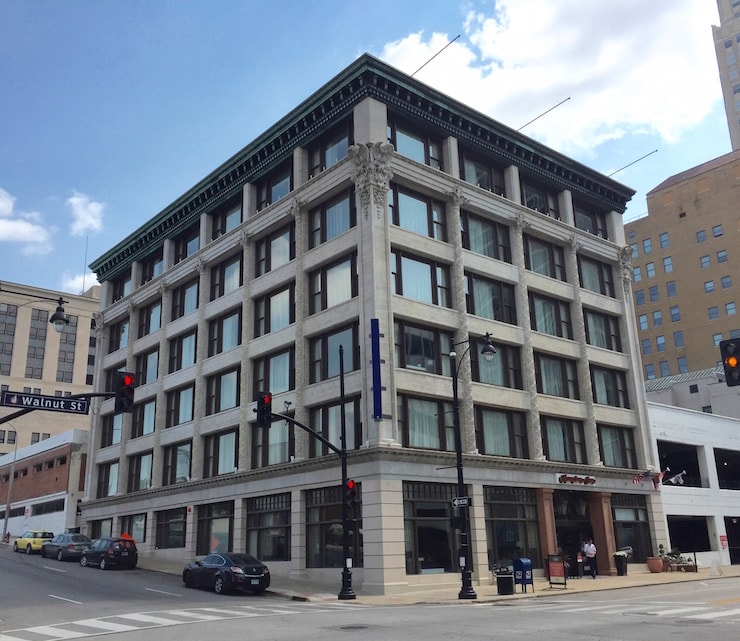Former St. Louis Mayor Tells Downtown Council New Coalition Forming to Defend Historic Tax Credit Program

Published September 15th, 2017 at 12:15 PM
By Kevin Collison
Threats to the Missouri Historic Tax Credit program are prompting preservationists to forge a coalition between cities and towns to lobby legislators about its benefits, a former St. Louis mayor told the Downtown Council last week.
Vincent Schoemehl, who served as mayor in St. Louis from 1981-1993, said proposed cuts to the state historic tax credit program would cripple a development tool that’s stimulated $8.2 billion in investment in Missouri since it was enacted in 1998.
“The reality is, historic tax credits are an investment,” Schoemehl told the board of the Downtown Council. “The reality also is, for ideological reasons, some folks don’t want to believe the numbers.”

Former St. Louis Mayor Vincent Schoemehl
The program provides state tax credits for 25 percent of the eligible cost of renovating buildings certified as historic by federal and state officials. Those credits then can be sold or transferred by developers to raise cash to help finance projects.
When combined with a similar federal historic tax credit program that provides a 20 percent credit, the tools have been used to renovate dozens of historic buildings, making it a major force in the revitalization of downtown Kansas City in recent years.
A task force established by Gov. Eric Greitens earlier this year is recommending the historic tax credit program be lumped together with the brownfield tax credit program and both capped at $50 million annually. The current yearly cap on the historic tax credit program is $140 million.
Schoemehl said historic preservation projects reached the current $140 million cap during the last fiscal year in late January, and are expected to max out in the current fiscal year by the end of this month.
He estimated for every $100 million in tax credits, $500 million in projects are generated.
The value of the historic tax credits in revitalizing and preserving the architectural heritage of Kansas City and St. Louis is fairly evident, but the benefits are not generally known in smaller communities around the state, the former mayor said.
“We’re in the middle of trying get everyone who cares about downtown Kansas City, St. Louis, Springfield and Joplin to support this,” Schoemehl said. “We’re now starting an urban-rural coalition.
“It’s important we figure out how to spread the benefits of this.”
On a personal note, Schoemehl told the board members he stayed the night before at the “most handsome Hampton Inn in captivity.”
He was referring to the Hampton Inn at 801 Walnut St. It opened two years ago in the 113 year-old Gumbel Building after a $6 million renovation that was financed partly by historic tax credits.


